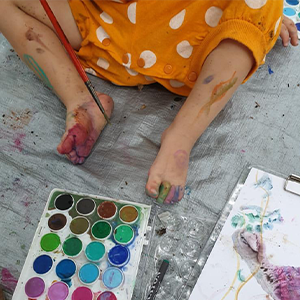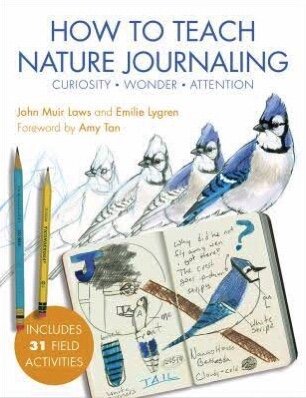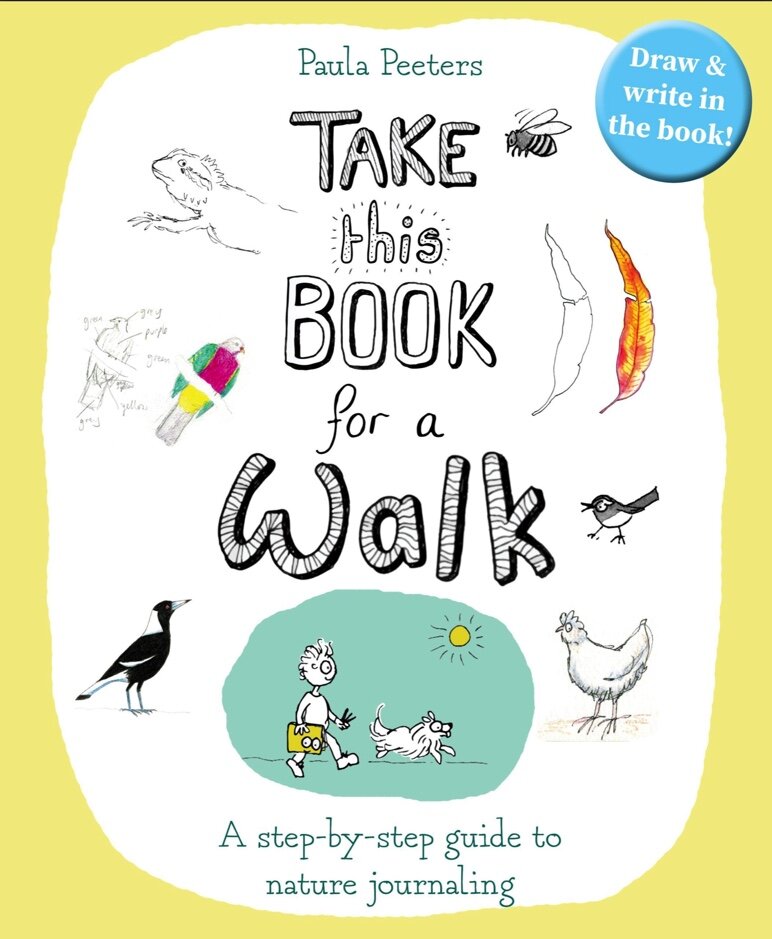For Parents & Teachers
There are so many reasons to encourage nature journaling for children at home and at school. Connecting with nature through journaling is a wonderful activity for families and a perfect way for teachers to bring science, maths and language curriculums alive. Through nature journaling you will have the chance to watch each child’s curiosity expand and their connection with nature deepen. By connecting young people with the natural world you are creating memories that they will carry with them throughout their lives and helping to grow a generation of future nature stewards.
Practical Tip: When sketching outside it is important to be prepared with things to keep children comfortable. Remember to pack snacks and water, sun protection, weather appropriate clothes and insect repellent if necessary. A bit of forethought and preparation can help everyone stay comfortable and focused on nature instead of being distracted with other things.
Nature journaling at every stage
Nature journaling will look different through the various stages of a child’s development. Below is a summary of possible ways to engage in nature journaling with children in different age groups:
Early years (age 0-4) - Nature journaling at this young age will likely take the form of simple mark making and observations made with a caregiver. Sit with your child and discuss what you see, hear and notice around you. Children are never too young to start this activity. Early language development is enhanced by talking with grown ups and nature awareness in these early years will foster a life-long love of the natural world.
When talking about flora and fauna you can be specific “Look there is a magpie-lark!” It is amazing how early young children can begin to identify different plant and animal species.
Introduce simple art materials and talk about the colours you notice in nature. Can you match the colour of a leaf with the colours in your palette? Your child might end up painting her own body or the grass or a stone and that is perfectly fine. The aim is to simply create space and time together outdoors that is enjoyable, engaging and fun.
Primary years (age 5-12) - Children in this age group can start to make more detailed nature observations and add pictures, words and numbers to their journal pages. Caregives and teachers can act as nature mentors. By modelling curiosity and wonder, you will guide and support children in the development of their own curiosity and help them follow the trail of questions towards amazing discoveries. Wonder aloud about things you see in nature…"Hey, I can see a caterpillar upside down on this piece of grass. I wonder why he's positioned like that." Children will start to do the same, and more questions will follow. You may have answers, or you may not. That's not important. The process itself will deepen their curiosity and connection.
There are different ways to begin a nature journal page. It can help to follow some simple prompts. Talking about the things children experience through their five senses and writing this down can be fun and informative. Sensory observations will also deepen a child’s connection and awareness of their own bodies and sensitivity to their surroundings. John Muir Laws encourages journalers to finish three simple statements: “I notice…; I wonder…; It reminds me of…” Another prompt (by artist Alex Boon), that can used when observing nature with children, is to ask the question “What else is here?” Sit quietly in nature and take a moment to connect, inwardly and outwardly. Ask the question “What else is here?” Record what you notice on your journal page. Ask this question again and again and see what you discover!
Teenage years (13-18) - Children in their teenage years can start to develop deep connections with nature through scientific investigation, mathematics and creative writing. Older children can also become mentors for younger ones, encouraging, supporting and developing nature awareness in others.
Counts, measurements and charts can all be a good ways to stretch the journaling practice further and incorporate maths and science into nature journaling. You could, for example, collect data on one species of plant across two different areas (for example in a forest reserve and a forest fragment). Is your data comparable? What are the possible mechanisms for the differences you observe? The possibilities for investigation are endless!
Poetry and descriptive prose can be used to develop language skills and articulate a child’s experiences in nature. Reflecting on personal thoughts and feelings will also help children develop emotional intelligence and allow them to grow into adults who care deeply about the world.
This video with Emilie Lygren will give you a little snapshot into what nature journaling is all about and how you might begin journaling with the children in your life. Emilie is the co-author of the book How to Teach Nature Journaling.
Resources
Author and educator, John Muir Laws has a website FULL of amazing resources that can be accessed free by parents and teachers. There you will find a comprehensive archive of blog posts, videos and workshops which will teach you all you need to know in order to get started with nature journaling at home or in class.
John’s latest book, co-authored with Emilie Lygren, is available to purchase in hardcopy or download in PDF format for free from his website johnmuirlaws.com. ‘How to Teach Nature Journaling’ is a step-by-step manual for teachers and parents. It combines curriculum plans, practical advice and in-the-field experience to help educators bring journaling to their students or families. Full-color illustrations and sample journal pages from notable naturalists and novices show how to put each lesson into practice.
‘Opening the World Through Nature Journaling’ is another free resource you can find at johnmuirlaws.com, which is full of detailed descriptions of nature journaling activities you can lead with your class, homeschool group, or nature centre. This guide gives an essential framework that will help you lead activities and motivate children (and adults) to use their journals.
‘The Nature Explorer’s Sketchbook’, by Jean Mackay, is a resource for youth ages 10+ which helps kids look more closely at nature and capture what they discover with pencil, pen, and paint. The book inspires exploration, creativity and observation with beautiful sketchbook illustrations, ideas and tips, and plenty of space for kids to draw.
‘Take this Book for a Walk’, by Paula Peeters, is a step-by-step guide to nature journaling, written in a friendly, simple style for kids and adults. It includes 33 nature journaling activities and many samples of her own nature journals for encouragement and inspiration. Printed on high-quality ‘colouring book’ paper, Take this Book for a Walk is designed for you to draw and write directly into the book to create your own unique nature journal.
A website where you can find a wealth of original educational resources for nature journaling and nature study (as well as any other subject) is Teachers pay Teachers. The site offers more than 3 million free and paid resources, created by educators who understand what works in the classroom.












